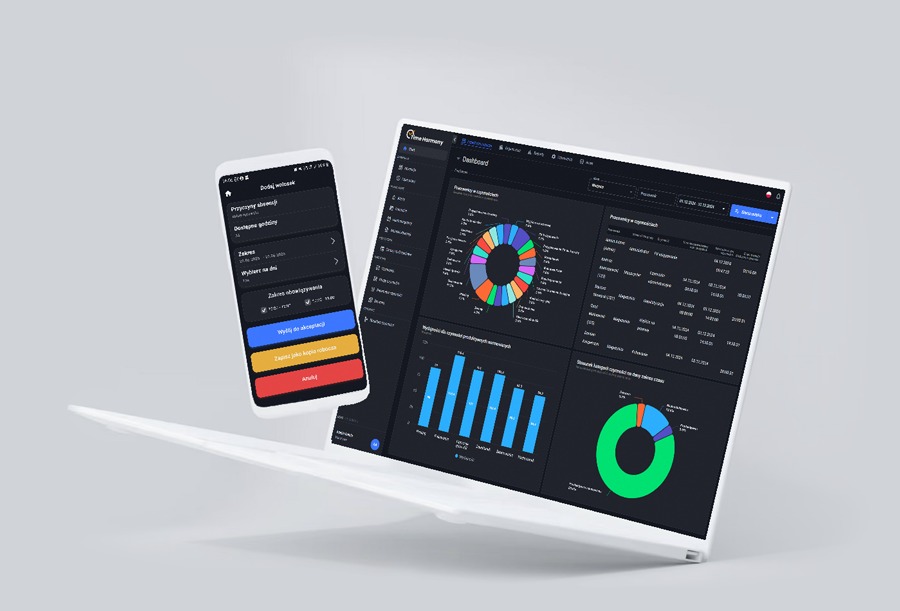Revolutionary changes to the Labour Code in Poland are coming soon. The 35-hour workweek is an official project dealt with by the Ministry of Family, Labour and Social Policy. According to the announcement of Minister Agnieszka Dziemianowicz-Bąk, changes in this area will be introduced in the current term of the government, i.e. by 2027. In this article, we'll look at the benefits and challenges of the 35-hour workweek, as well as examples of countries and Polish companies that have taken this bold step.
Poland compared to European countries
Poland ranks among the busiest countries in the European Union. According to the current regulations, the applicable working time is 40 hours a week, which means that we work 8 hours a day, 5 days a week. Although the Labour Code allows for other models of working time organisation (equivalent, in continuous operation, intermittent, task-based, weekend), for most of us the working week comes down to the model of 8 hours a day, 5 days a week.
The Ministry argues that the need to shorten the 40-hour working week is due to the need to adapt to the expectations of the young generation of employees entering the labour market and the need to ensure a better work-life balance between employees. In addition, it is a step in the direction that a large number of European countries are already taking.
35 hours or even less. Where in Europe people work the shortest
The first to shorten the working week were the French, who already in 2000 introduced the so-called "Aubry law", under which the standard working week was reduced to 35 hours a week. According to Eurostat data, Norwegians (34.2 hours per week) and the Dutch (31.6 hours per week) work even fewer hours per week. Belgians have been using a 4-day working week since 2022, while in Germany the plan to introduce a 35-hour working week is already in the pilot phase.
A bit of history
As a reminder, the concept of shortening the working week has a long history, dating back to the late 19th century, when labor movements fought to limit working hours to 8 hours a day. At the peak of industrialization, the working day was as much as 18 hours! In Poland, the five-day working week, which is still present today, became a fact with the advent of political changes after 1989. Free Saturdays were introduced gradually. In 1973, employees were granted two Saturdays off per year, then their number was increased to 6, and since 1975 employees have gained 12 Saturdays off per year, i.e. one per month. Today, a free Saturday is something obvious for us. Everything indicates that it will be similar with Friday. Nowadays, the discussion about the 35-hour workweek began to gain momentum in the 1990s.
A 35-hour workweek. Pioneers on the Polish market
Although the shortening of the working week in Poland is only a project that needs to be developed and adopted, we hear more and more often about companies and institutions that have decided to take such a step.
An example is the Włocławek Town Hall Office, which has been introducing a model assuming work of 7 hours a day, 5 days a week since September this year. The Mayor of Włocławek, Krzysztof Kukucki, treats the change as a target model, and its final shape, i.e. working 7 hours a day for 5 days a week vs. 8 hours a day for 4 days a week, was chosen by the employees by voting, although, as the mayor of Włocławek admitted, the difference in votes was very small.
An example of a company from the private sector that decided to implement a pilot project to reduce working time is Herbapol Poznań. The draft introduced in January 2024 was preceded by consultations with employees and extensive legal analyses, due to the fact that such a solution does not yet exist in the Polish legal system. The action plan developed by the Company's Management Board assumes that in each subsequent quarter the company's employees gain one additional Friday off. In the first quarter, there was one Friday a month off work, in the second two and so on. Ultimately, according to the project's assumptions, employees will work 4 days a week. By gradually shortening the working week, the company has given itself time to adjust processes and analyze the effects of the changes on an ongoing basis.
Processing changes in Poland
At the moment, the Ministry is working on the selection of the optimal model under which the new, shortened weekly working time will apply. There are two scenarios mentioned above, i.e. working 7 hours a day for 5 days a week or working 8 hours a day for 4 days a week. It is worth noting that the reduction of working hours is to take place without affecting the level of wages.
The head of the National Labour Inspectorate, Marcin Stanecki, gave a positive opinion on the direction of the discussed changes, stressing that their introduction is only a matter of time. He also informed that the Ministry of Family, Labour and Social Policy asked the Central Institute for Labour Protection to analyse the impact of the changes on the accident rate in the workplace and the health of employees. Such an analysis would be the culmination of a long-term government program to improve safety and working conditions, under which the reduction of working time will be confronted with economic, demographic and market realities.
Challenges for employers and the development of technology
Shortening working time raises a lot of controversy, mainly due to concerns about increased costs, related to the need to adapt processes and hire more employees to ensure continuity of production or services. The new regulations may also be a big challenge for the public sector, in which there is already a shortage of willing workforce. The Polish Economic Institute in a recent study on shortening working time reported that 51 percent of companies believe that switching to a 4-day working week is impossible due to the specifics of their industry. Supporters of the changes, on the other hand, argue that the development of new technologies, automation and robotization of processes can be the answer to the challenges of the labor market.
Will the benefits outweigh the challenges?
According to the Head of the National Labour Inspectorate, mentioned earlier, yes. The available results of research conducted around the world indicate that shortening working time can have many positive effects. Among other things, improving the work-life balance, extending the time for regeneration, improving work organization, improving the quality and duration of sleep, reducing stress levels, reducing the level of burnout or improving physical health resulting from more exercise. As Marcin Stanecki notes, however, attention should be paid to the risk, which may materialize, especially in the Polish reality, that employees will fill the additional day off with additional paid work and thus lose the above-mentioned positive effects of the shortened working week.
The role of performance measurement systems in reducing working hours
In the context of reducing the working week from 40 to 35 hours, the implementation of advanced systems for measuring performance becomes crucial. Modern analytical tools allow for precise monitoring of employee efficiency, which is necessary to assess whether shorter working hours translate into expected results.
A 35-hour workweek. Precise performance monitoring with Time Harmony
Time Harmony is an advanced performance measurement system based on data collection and analysis, enabling detailed tracking of working time, the effectiveness of tasks performed and the level of employee engagement. This allows employers to better understand which processes need to be optimized, which is crucial when shortening the working week. The system provides real-time data enabling real-time insight into the course of processes, collects historical data and generates reports necessary to assess and analyze efficiency and take optimization steps.
Time to adjust
At the moment, it is not known when the regulations announced by the Ministry to shorten the working week will be adopted. However, their introduction seems inevitable, so managers of companies and institutions should already think about how to prepare their companies for change, what processes should be adapted and optimized, and what tools to use for this purpose.

Optimize working time and efficiency of your team

